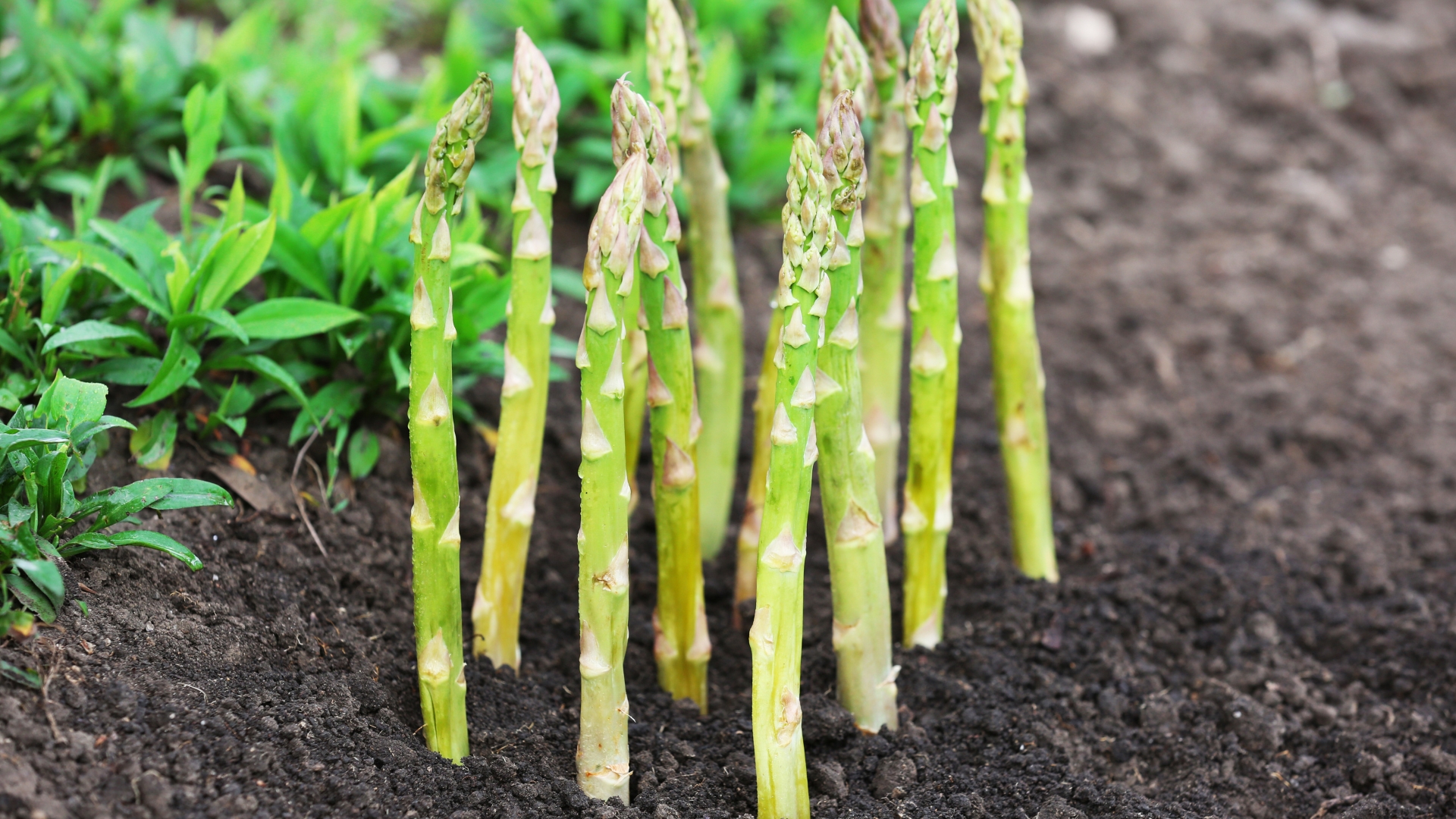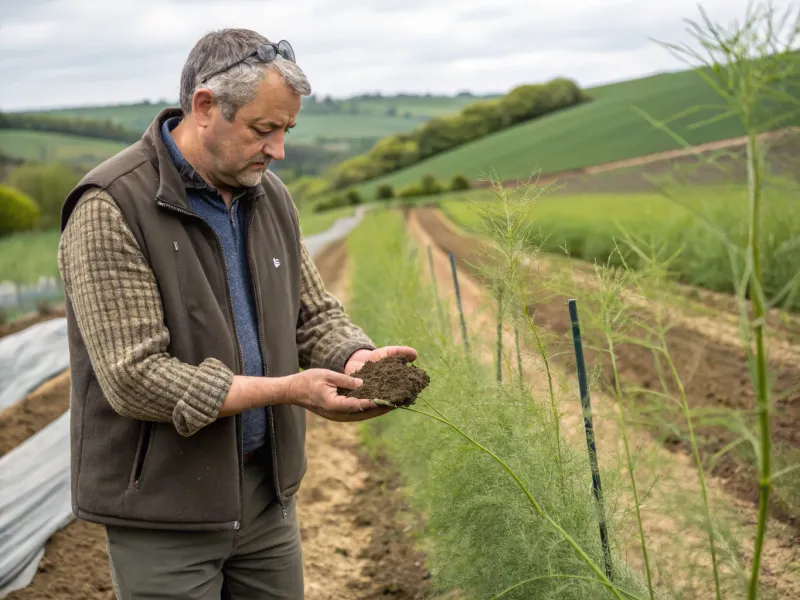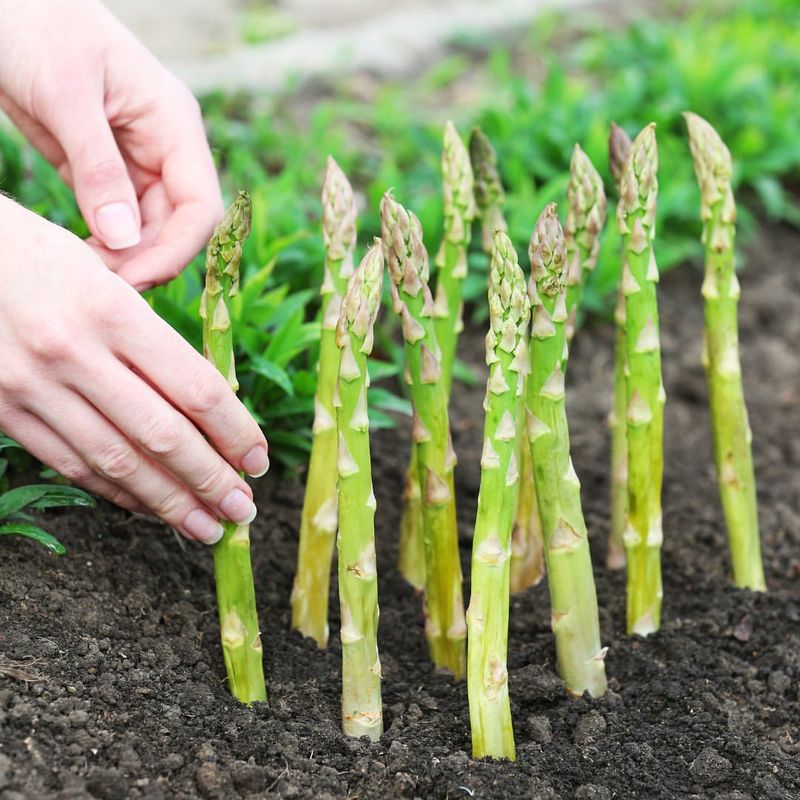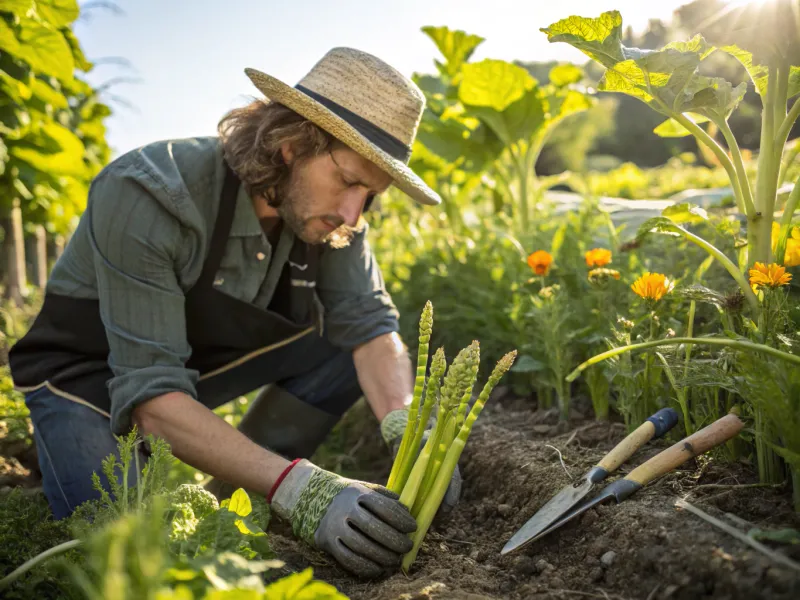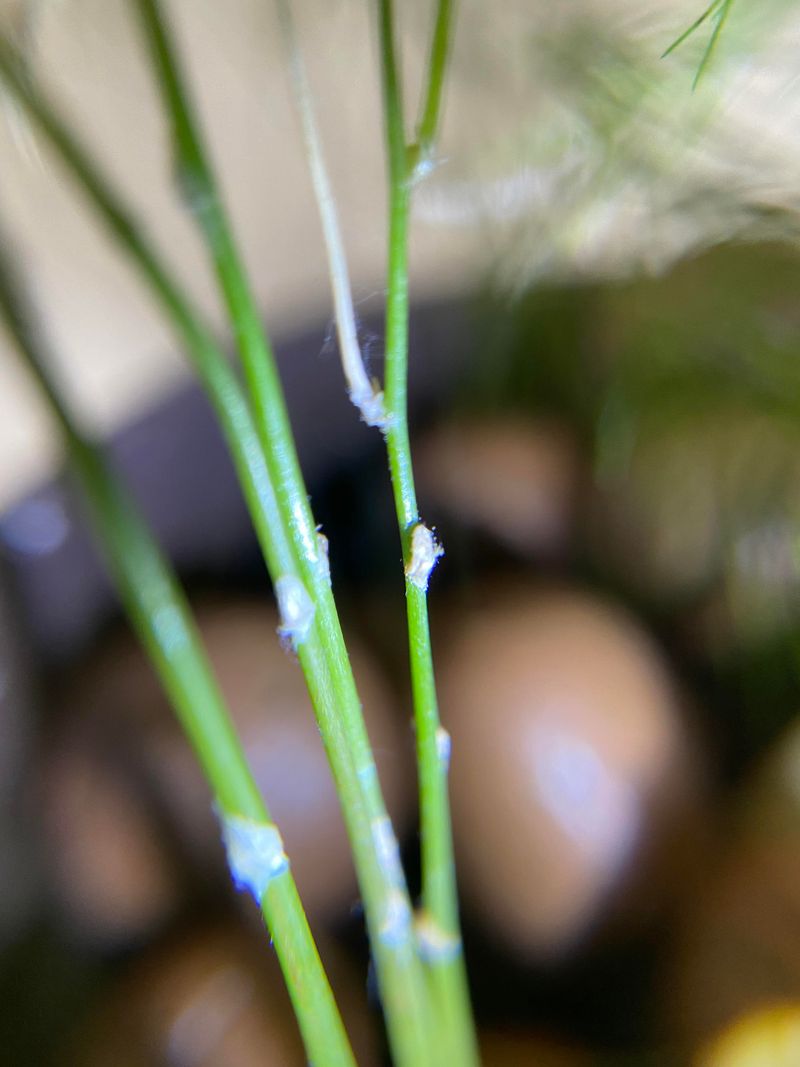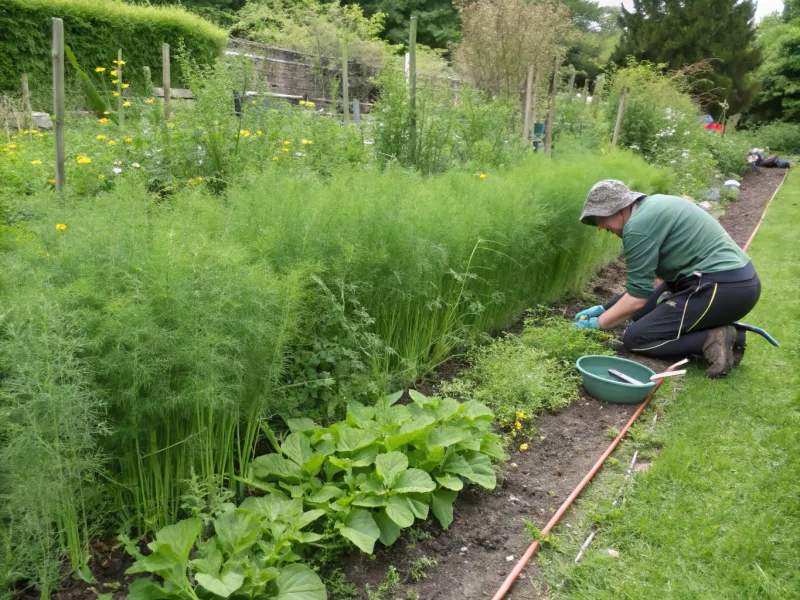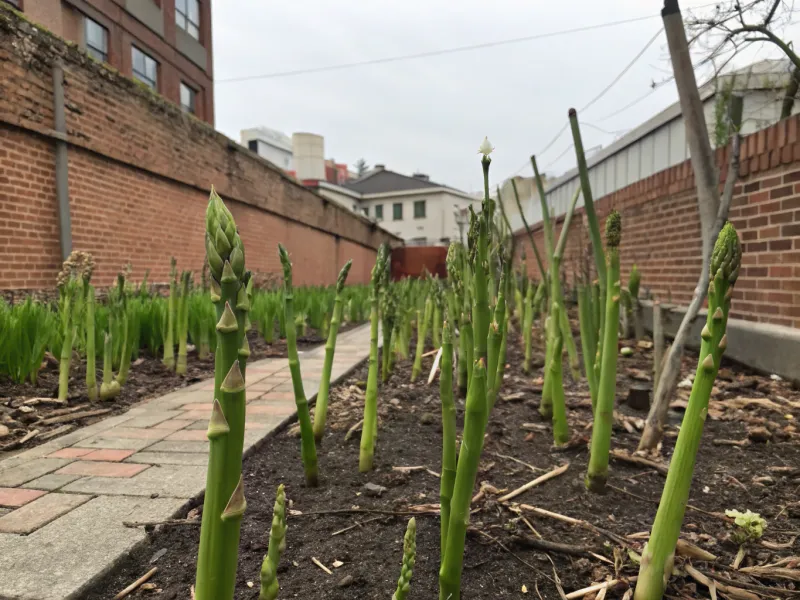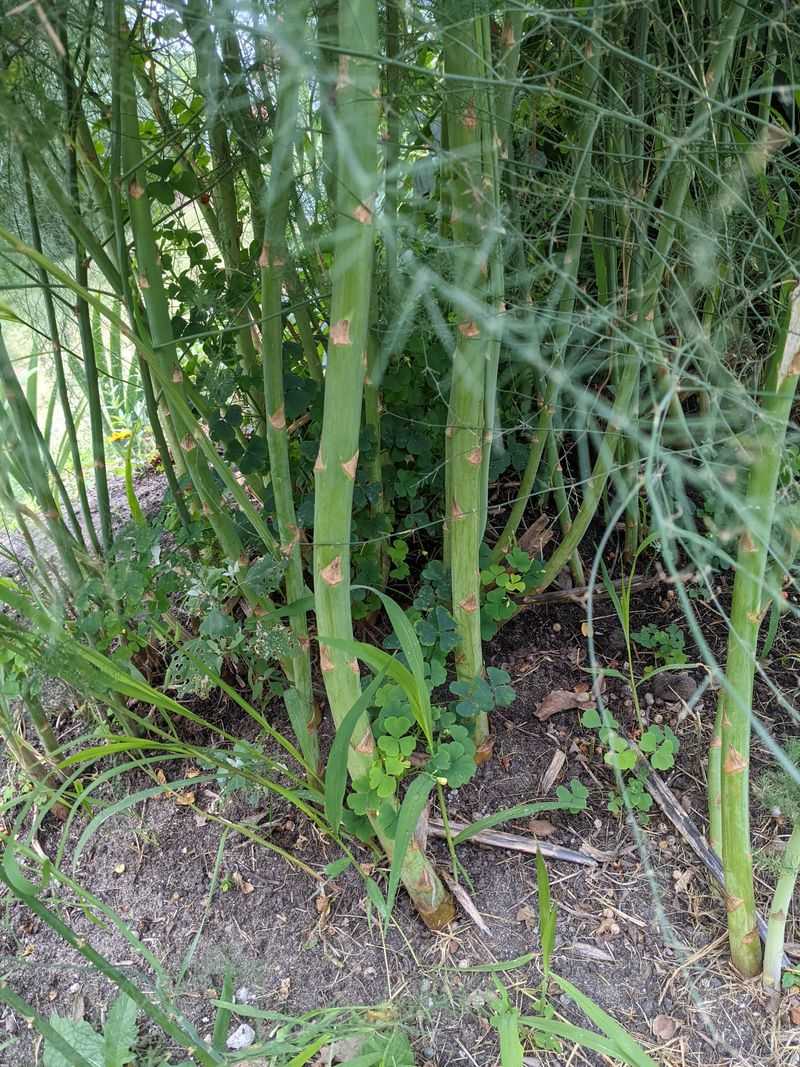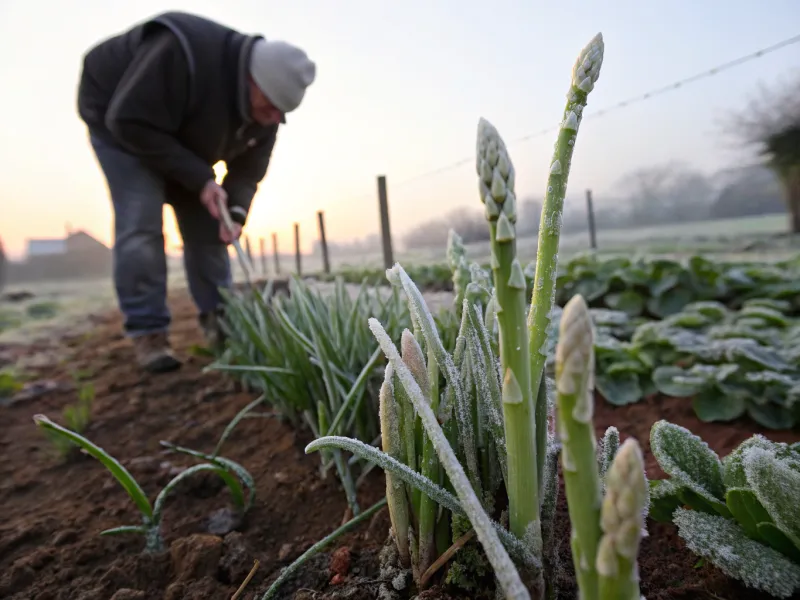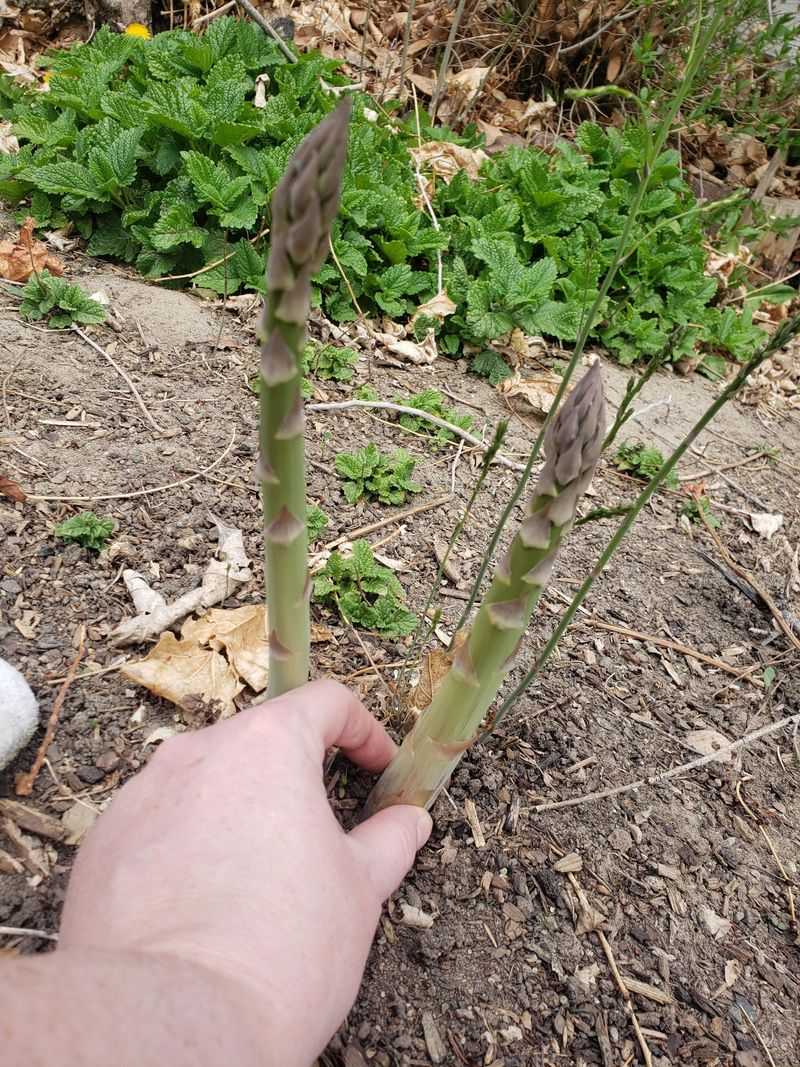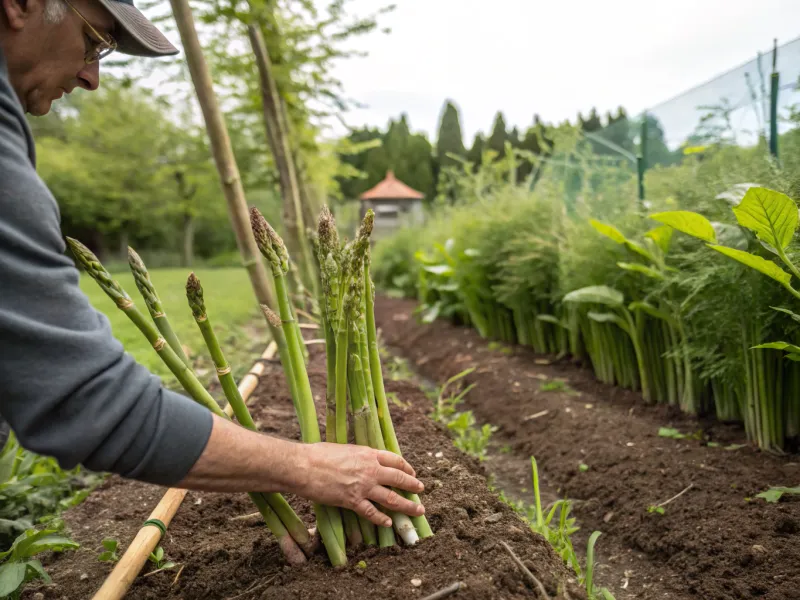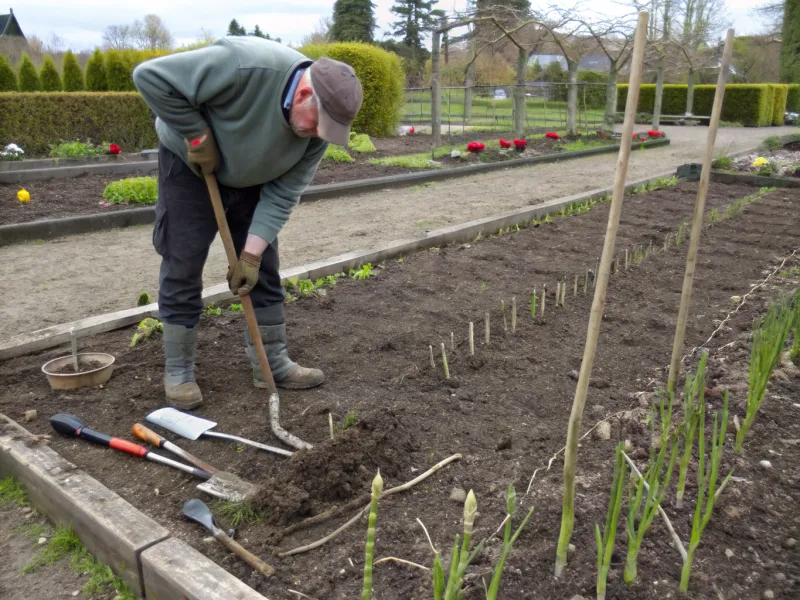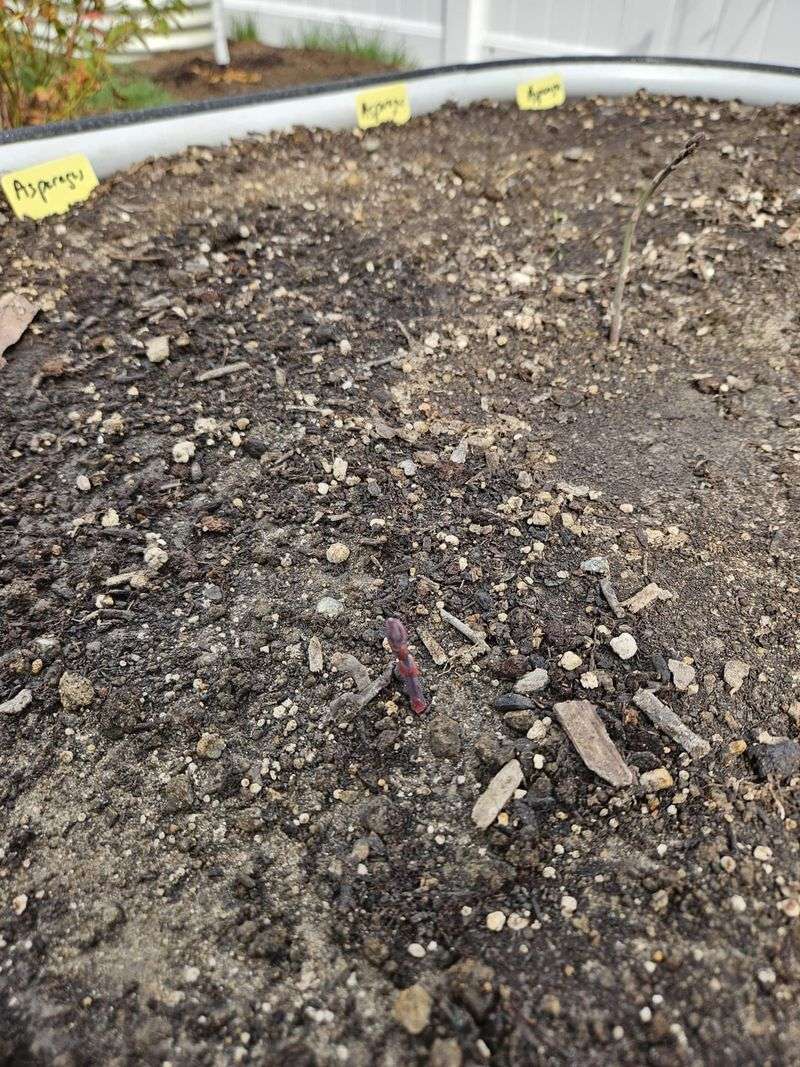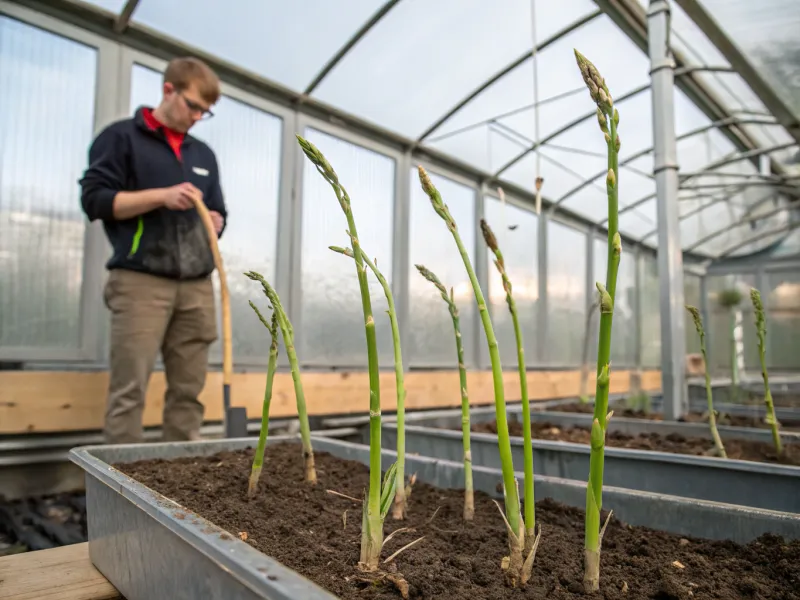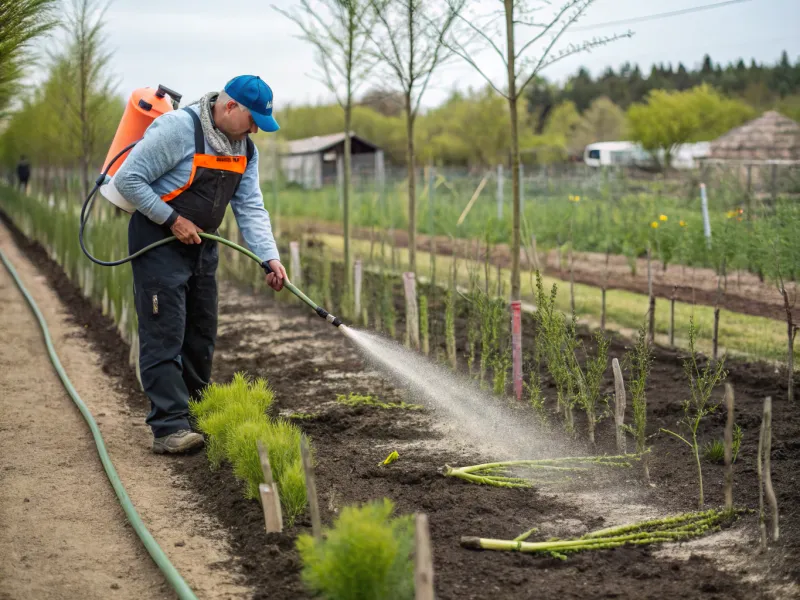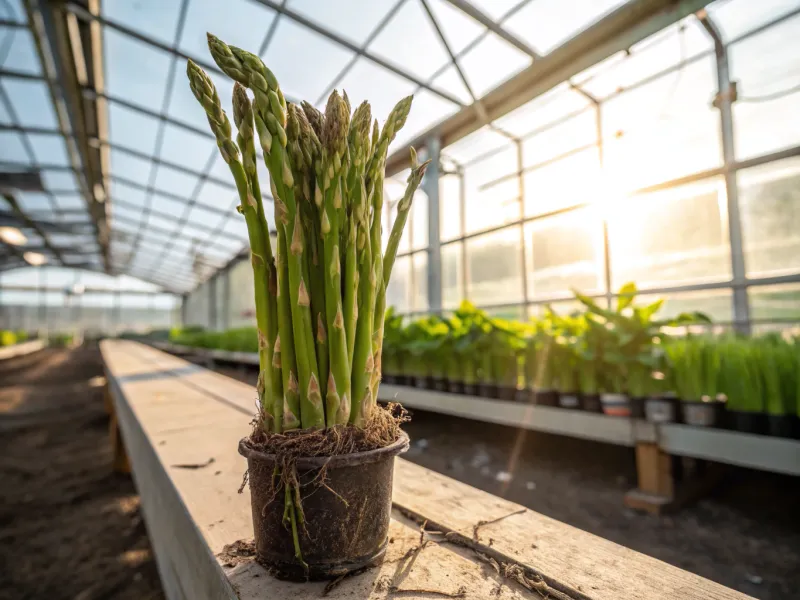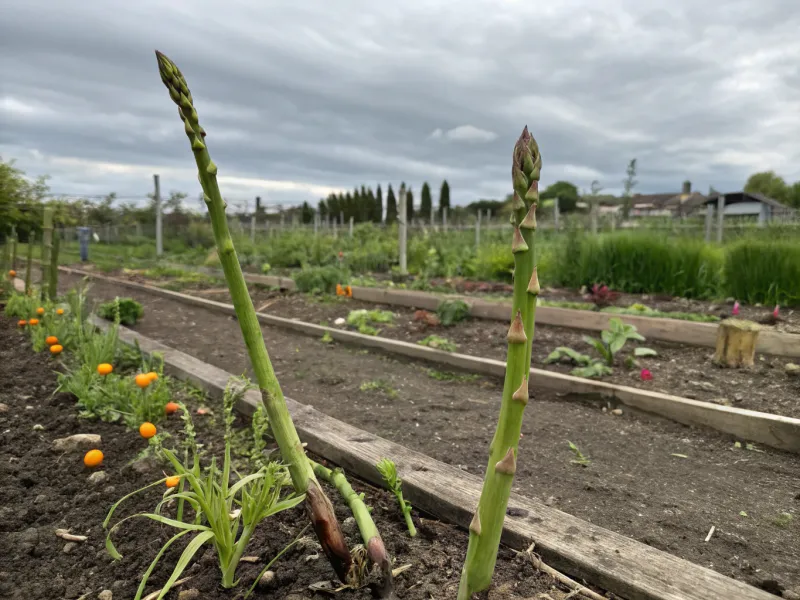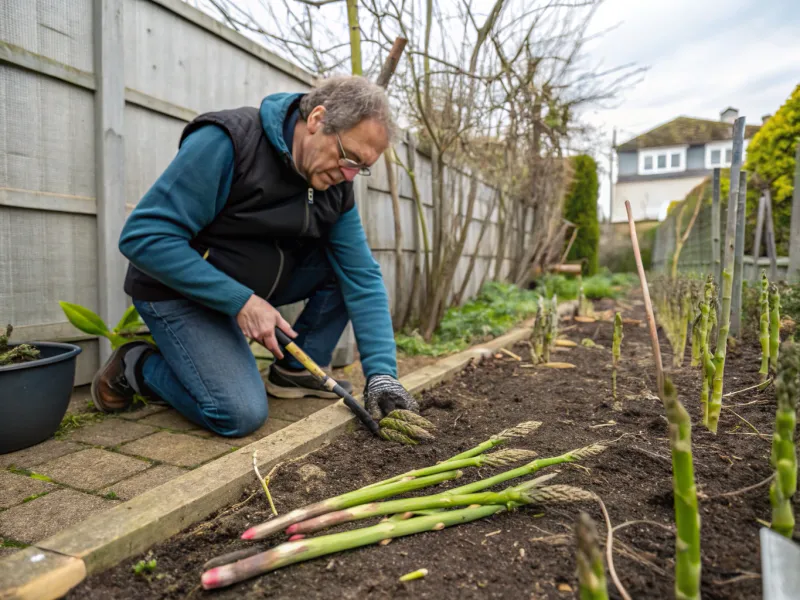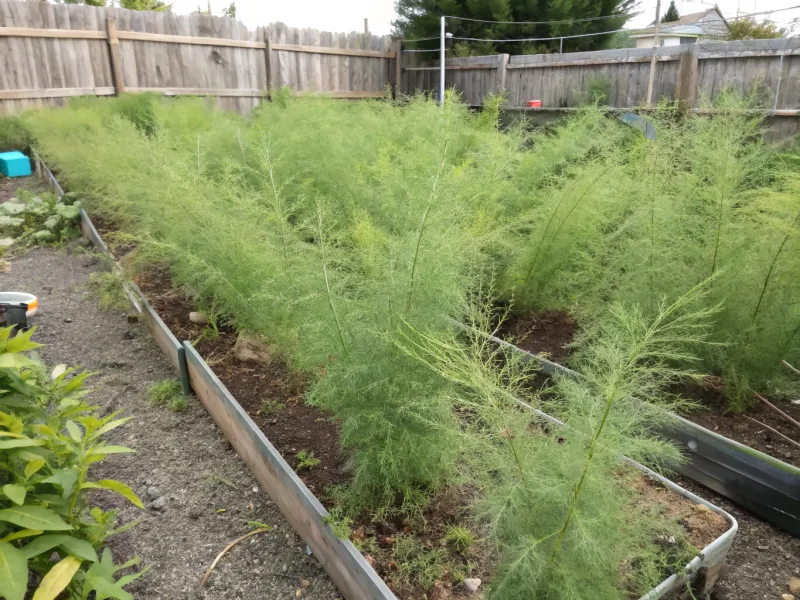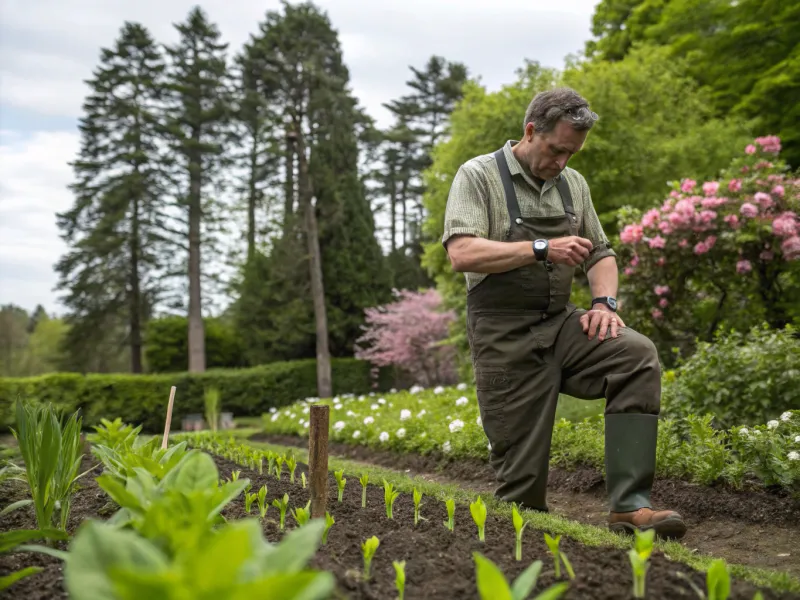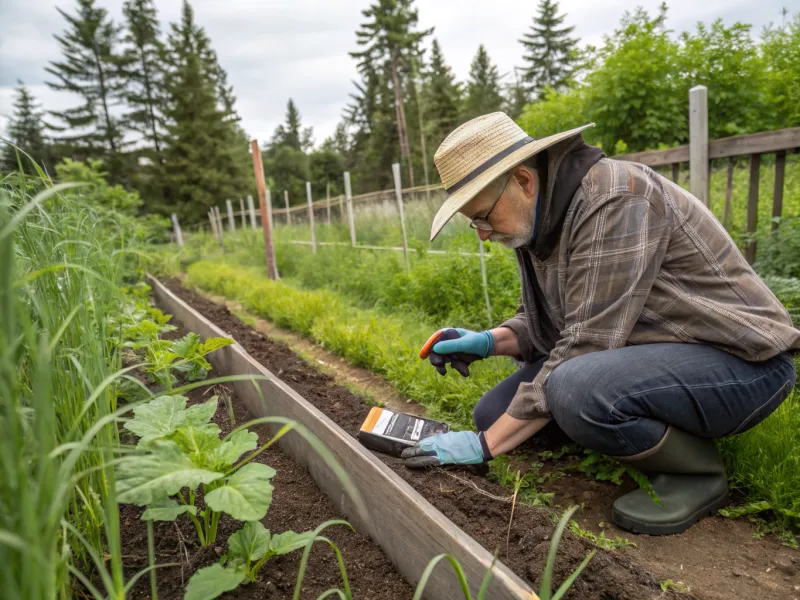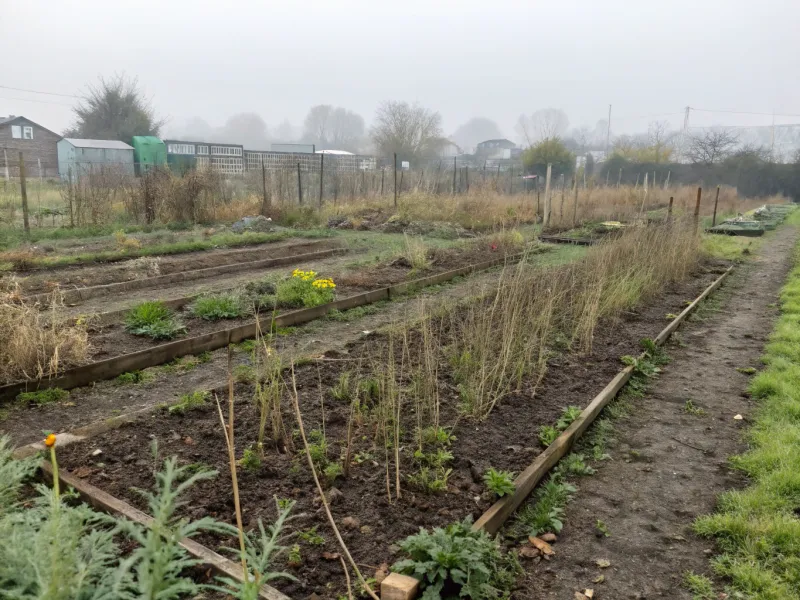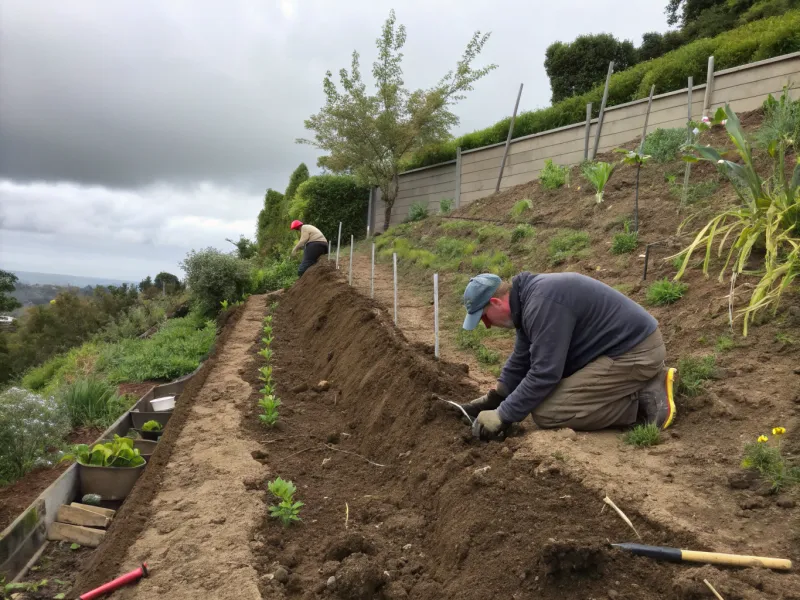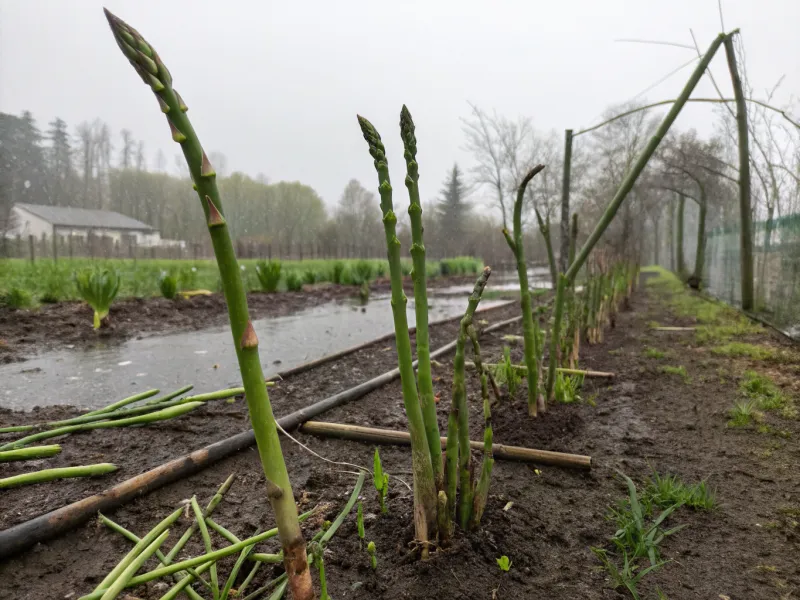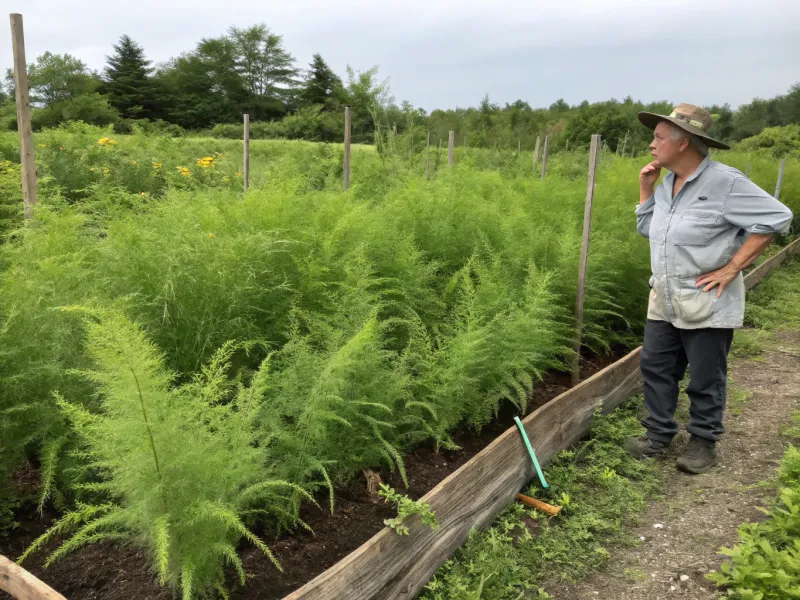Growing asparagus can be incredibly rewarding, but there are a few issues you should be aware of before you start planting.
Over the years, I’ve learned that these challenges can sneak up on you if you’re not prepared. From soil conditions to pests, there are a number of factors that can affect your crop’s success.
The good news is, once you know what to look out for, you can take steps to avoid them. Let’s go over the most common issues so you can grow asparagus with confidence!
1. Soil Quality Concerns
When it comes to soil, asparagus has some picky preferences. It craves well-drained, sandy soil that’s rich in organic matter. Failing to provide this can lead to stunted growth or even plant death.
Is your garden’s soil up to asparagus standards? If it’s too heavy or clay-like, you might find your asparagus struggling to breathe. Consider amending it with compost or other organic materials to improve drainage and fertility.
2. Poor Drainage Woes
Waterlogged soil is to asparagus as Kryptonite is to Superman. This super-veggie hates having wet feet and can easily succumb to root rot if drainage is poor. Elevated beds might be your savior here!
Are you seeing puddles in your asparagus beds after a rainstorm? That’s a red flag! Consider creating raised beds or amending soil with sand to ensure your plants don’t drown.
3. Inadequate Sunlight Exposure
Asparagus is a sun worshiper, and without sufficient rays, it won’t reach its full potential. Aim for at least 6-8 hours of sunlight per day to keep those spears strong and healthy.
Do tall trees or buildings cast shadows over your asparagus patch? You may need to relocate your plants to a sunnier spot. Remember, shade is the enemy of robust asparagus growth.
4. Nutrient Deficiencies
Yellowing spears might be a cry for help from your asparagus plants. Nutrient deficiencies, particularly in nitrogen, can leave your plants looking lackluster. Fertilize appropriately to keep them vibrant.
Have you noticed pale or yellowing leaves? It’s time to test your soil’s nutrient levels. A balanced fertilizer can replenish what your asparagus is missing, bringing back that lush green hue.
5. Pest Infestations
Asparagus has its fair share of enemies in the insect world. The asparagus beetle is particularly notorious, munching away at your precious spears. Hand-picking and organic insecticides can help.
Are you spotting holes in your asparagus spears? Those pesky beetles might be to blame. Regular inspections and swift action are key to keeping your crop safe from these critters.
6. Weed Competition
Weeds are the uninvited guests at your asparagus party. They compete for nutrients and sunlight, leaving your asparagus fighting for survival. Regular weeding is a must to keep them at bay.
Is your asparagus patch looking more like a weed jungle? It’s time to roll up your sleeves and start pulling. Keeping those weeds under control ensures your asparagus gets the resources it needs.
7. Overcrowding Issues
Space is essential for asparagus to thrive. Overcrowding leads to poor air circulation and stunted growth. Ensure proper spacing to allow each plant room to breathe and expand.
Does your asparagus bed resemble a crowded subway car? It’s time to thin out the crowd. Giving each plant ample space can result in healthier, more productive spears.
8. Improper Watering Practices
Asparagus is picky about its hydration. Too much or too little water can spell disaster. Consistent, even watering is the key to happy plants.
Are you leaving your asparagus thirsty or drowning them in love? An irrigation system or a fixed schedule can help maintain the perfect moisture balance. Remember, moderation is the secret sauce to successful watering.
9. Frost Damage
Frost is a sneaky adversary for young asparagus spears. It can nip them in the bud, literally! Protecting them during unexpected cold snaps is crucial.
Have you noticed frost-kissed spears in the morning? Covering them with mulch or a frost blanket can shield them from harsh cold. A little preparation goes a long way in keeping your asparagus snug.
10. Disease Threats
Asparagus isn’t immune to diseases, with rust and root rot being common culprits. Maintaining good sanitation and choosing disease-resistant varieties can help minimize risks.
Are you seeing unusual spots or discoloration on your spears? It might be time for a closer inspection. Early detection and proper plant hygiene can keep your asparagus healthy and thriving.
11. Harvest Timing Errors
Harvesting asparagus is a game of patience and timing. Picking spears too early can affect future yields. Wait until spears are at least 6-8 inches tall for the best results.
Are you tempted to pluck those spears at the first sight of growth? Resist the urge! Proper timing ensures you enjoy a bountiful harvest year after year.
12. Improper Bed Preparation
An asparagus bed is like a fine wine – it needs time to mature. Preparing beds with rich, well-drained soil sets the stage for success. Consider it the foundation of your asparagus empire.
Have you rushed through bed preparation? Investing time and effort in creating the perfect bed pays off in the long run. It’s the secret to robust and thriving asparagus.
13. Lack of Mulching
Mulch is the unsung hero in asparagus gardening. It conserves moisture, suppresses weeds, and adds nutrients as it breaks down. Consider it your asparagus’s best friend.
Is your asparagus bed looking a little bare? Adding a layer of mulch can work wonders. It’s like wrapping your plants in a cozy blanket that keeps them happy and healthy.
14. Seedling Transplant Shock
Transplanting asparagus seedlings is like moving to a new home – stressful! Proper care during this transition can help reduce shock and encourage growth.
Are your seedlings looking a little droopy after transplanting? Give them extra TLC with gentle watering and protection from harsh conditions. A smooth transition gets them off to a great start.
15. Improper Fertilization
Feeding asparagus requires a delicate balance. Over-fertilization can lead to excessive foliage with little spear production. Stick to a balanced regimen to nourish without overwhelming.
Did you go a little overboard with the fertilizer? Less is often more when it comes to feeding asparagus. A measured approach keeps your plants thriving without the excess baggage.
16. Wildlife Intrusions
Even Mother Nature wants a taste of your asparagus! Wildlife like rabbits and deer find these spears irresistible. Fencing or repellents can keep them at bay.
Is your asparagus disappearing overnight? Blame the local wildlife! Protecting your garden can save your spears from becoming a midnight snack.
17. Root Crowding
Asparagus roots need room to stretch and grow. Crowded roots can lead to weak plants and reduced yields. Ensure ample space for root expansion.
Does your asparagus pot look more like a root ball? It’s time to repot into a larger container. Happy roots lead to happy spears!
18. Lack of Pollinators
Pollinators are the unsung heroes of asparagus reproduction. Without them, seed production suffers. Encourage bees and other pollinators to visit your garden.
Does your garden seem a little too quiet? Attract pollinators with flowering plants and avoid pesticides. Their buzz is essential for a thriving asparagus crop!
19. Overharvesting
Patience is a virtue when it comes to asparagus harvesting. Overharvesting can weaken plants and reduce future yields. Harvest selectively to encourage healthy regrowth.
Are you tempted to pick every spear you see? Hold back a little! A mindful approach ensures a strong and productive asparagus bed.
20. Improper Pruning Techniques
Pruning asparagus isn’t just for aesthetics. Proper techniques encourage vigorous growth and prevent disease. Use sharp, clean tools for the best results.
Are you wielding your pruners like a samurai sword? Gentle finesse is key! Thoughtful pruning keeps your asparagus healthy and looking sharp.
21. Poor Air Circulation
Good airflow is essential for asparagus health. Poor circulation can lead to mold and disease. Provide space and structure for breezes to flow through.
Is your asparagus looking a little stuffy? Thinning out plants or rearranging layout can improve air movement. Fresh air is a breath of life for your spears.
22. Wrong Asparagus Variety
Not all asparagus varieties are created equal. Choosing the wrong one can lead to poor adaptation and low yields. Research and select a variety suited to your climate.
Are you overwhelmed by the asparagus seed options? Take a moment to match the variety with your garden’s conditions. A little homework leads to a more fruitful harvest.
23. Lack of Patience
Growing asparagus is a marathon, not a sprint. It takes years to establish a productive bed. Patience rewards you with abundant spears in the future.
Are you expecting instant gratification from your asparagus? Give it time to mature. The wait is worthwhile when your garden is filled with delicious spears.
24. Soil pH Imbalance
Asparagus thrives in slightly acidic to neutral soil. A pH imbalance can cause nutrient uptake issues and poor growth. Regular testing ensures the right conditions.
Are your asparagus plants underperforming? Check that soil pH! Adjusting acidity levels can revive your spears and boost their growth.
25. Neglecting Asparagus Beds in Off-Season
Asparagus beds need love even in the off-season. Neglect can lead to weed invasions and nutrient depletion. Off-season care ensures strong plants come spring.
Is your asparagus bed looking forlorn in winter? Maintenance doesn’t stop with the growing season. Give your beds attention year-round for continuous rewards.
26. Ignoring Soil Erosion Risks
Erosion can wash away vital nutrients, leaving asparagus struggling. Contour planting and cover crops can prevent this loss. Protecting your soil is protecting your plants.
Is your garden on a slope? Keep an eye on soil erosion. Mitigating it ensures your asparagus enjoys a stable, nutrient-rich home.
27. Unstable Weather Conditions
Weather unpredictability can challenge asparagus growth. Extreme conditions like storms or droughts can stress plants. Adaptation strategies can mitigate damage.
Have sudden weather changes left your asparagus battered? It’s time to plan for resilience. Weatherproofing your garden can shield your plants from nature’s whims.
28. Ignoring Pest Control Options
Pests can be persistent adversaries to asparagus. Ignoring control options can lead to significant damage. Explore organic and chemical treatments to protect your crop.
Are you turning a blind eye to pests munching your spears? Time to take action! Effective pest control keeps your asparagus in prime condition.
29. Lack of Crop Rotation
Crop rotation is a cornerstone of healthy gardens. Repeated planting in the same spot depletes nutrients and invites disease. Rotate crops to rejuvenate soil and break pest cycles.
Are you stuck in the same planting routine? Rotate your asparagus bed with other crops. It’s a refresh button for your soil’s health and productivity.
30. Failure to Remove Ferns
Asparagus ferns are the fiery finale of the season. Leaving them through winter protects crowns but needs removal in spring. Clearing ferns prepares plants for new growth.
Is your asparagus bed a fern jungle? Don’t forget to clear them out post-winter. Removing ferns paves the way for a fresh asparagus start.

